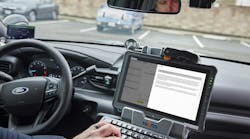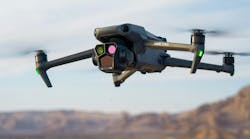License Plate Recognition: The “secret sauce” for successful citywide surveillance
The constant presence of crime in our communities, coupled with the more recent threat of terrorism, has made citywide video surveillance an increasingly desirable tool for many municipalities. Indeed, such security measures have been deployed in foreign markets for many years, a prime example of which is London’s famous “Ring of Steel,” which was established in the early 1990s as a deterrent against attacks by the Irish Republican Army.
In the U.S., adoption of citywide video surveillance systems has been a slower process; however, it is on the rise. While large cities like New York and Chicago have implemented well-publicized deployments of sophisticated and costly systems, the advent of inexpensive IP video technology has made city surveillance possible even in smaller metro areas such as Dubuque, Iowa; Buffalo, New York; and Savannah, Georgia. Some of these cities’ systems are geared toward security, others toward curtailing crime, and still others toward traffic safety. They all have a couple things in common. One, they provide extra eyes for law enforcement personnel, who, dedicated as they are, can’t be everywhere at once. And two, they record what they see, providing invaluable forensic evidence in cases of traffic accidents or criminal activities. The video is HD-quality and digital, which means that it is stored on high-capacity servers instead of the banks of VCRs that were typical in the early days of video surveillance.
As useful as all of that is, there are still limits on these systems’ effectiveness. Although the stored video is easily accessible, a police officer may have to manually scan through hours of video to find the recording of a particular incident. Also, if a crime is committed on video by an individual that is already wanted by law enforcement, the perpetrator may be long gone before police officers are even alerted to his presence. More is needed to truly maximize what citywide video surveillance can do. The system needs to be able to help law enforcement and security personnel by automatically extracting and analyzing data from video, and cataloging it for instant access. In short, those extra eyes need a brain.
License plate recognition (LPR) can be the most important component of an “intelligent” citywide monitoring system. The creation of inexpensive and flexible software-only LPR-based analytic solutions means that any citywide surveillance system, even one already in place, can now be modified to extract and analyze license plate data from video. No longer is LPR restricted to mobile vehicle-mounted units that detect license plates and run them for active warrants. Now, with fixed-location cameras at every intersection in town, a surveillance system can automatically detect and run plates, as well as document vehicle movements citywide and recognize suspicious patterns of behavior.
Consider one hypothetical case study. The unnamed city in question is real, and recently established a video surveillance solution at its two water treatment plants. Future plans are for this system to be expanded citywide. What follows shows how security would be drastically improved by adding an affordable, cost-effective LPR analytics platform to this surveillance solution.
In its current configuration, video surveillance is comprehensive at the two plants; the system monitors plant perimeters and the water supplies throughout the city. According to a network analyst, response to security issues is quicker since the new system was deployed. Additionally, the police can be directly involved in review of the archive footage from any of the system’s operative cameras. Unfortunately, if a security breach occurs at either of the plants, it may take hours of scanning through footage from multiple cameras to find the recording of the incident. Once the relevant footage is recovered, the license plate still has to be run for active wants or warrants, and the authorities have only a general idea as to when or if the person entered and exited the property. They also don’t know if this perpetrator was casing the area in advance.
Now, imagine the following scenarios: (1) The perpetrator is a known terrorism suspect. As soon as his vehicle is detected outside the plant’s perimeter, the police are automatically notified and sent to capture him. (2) A terrorist with plans to sabotage the plant has no criminal record or warrants against him. However, his vehicle is detected passing by the plant perimeter at approximately the same time every night for a week straight. His license plate is entered on a hotlist at the plant. The next night, when his vehicle is detected again, security personnel are alerted and call the police. When the police question the suspect, they already have evidence that he has been casing the plant. A major terrorist act is prevented. (3) A vandal enters the plant in the middle of the night just to cause trouble. His entries and exits, as well as everywhere he goes on the plant property, are recorded with time and date stamps, as well as locations. If he has a want or warrant against him, the police are automatically dispatched. If not, a quick check of the night’s license plate captures show the unusual activity, and the police know who to look for.
Next, imagine all of these scenarios expanded to an entire city, just as the city in the example above intends to do. The perpetrators in our hypothetical scenarios could be immediately tracked down with only a few mouse clicks. If they leave the city, police know when and how by following the trail of license plate captures. No longer would any person of interest go undetected. Why? Because everybody drives. Remember that 70 to 75 percent of all crime, terrorism included, is linked to a license plate. LPR-based analytics integrated into citywide surveillance makes response time to criminal events almost instantaneous and takes the guesswork out of the investigative process. And all of this is possible with affordable technology that exists now.
LPR analytics solutions can integrate into existing video security systems to quickly recognize suspicious activity and run reports.
The market for citywide surveillance is growing. With LPR as a part of that toolbox, our cities will be safer and more secure than they have been in the last hundred years. With technology that is already available, a city need not empty its coffers to give its citizens that peace of mind today.



